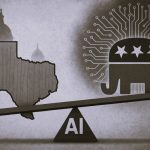


By Dr. Randall J. Stephens
Professor of History
University of Oslo
Randall J. Stephens responds to Kelly J. Baker’s essay, “The Artifacts of White Supremacy,” which is featured in the June issue of the Forum. Baker’s essay considers how discussions about racism—and white supremacy in particular—tend to treat it as a matter of belief, while there’s considerably less talk of how racialized hate becomes tangible and real. And yet, we know the Ku Klux Klan, the oldest hate group in the U.S., by their hoods and robes. Artifacts signal (and often embody) the racist ideology of the Klan, along with their particular brand of Protestantism and nationalism. Robes, fiery crosses, and even the American flag were all material objects employed by the 1920s Klan to convey their “gospel” of white supremacy. The Klan’s religious nationalism, its vision of a white Protestant America, became tangible in each of these artifacts, and each artifact reflected the order’s religious and racial intolerance. Nationalism (or “100% Americanism”), Protestant Christianity, and white supremacy became inextricably linked in these material objects. Examining the historical artifacts of white supremacy helps us to better understand how white supremacy manifests today and might also help us better identify and analyze the presence and effect of racism in American life and politics.
Kelly Baker rightly reminds us that the second Klan drew deep from the well of white Protestantism and nationalism. The organization’s fierce religious bigotry and xenophobia appealed to millions of Americans in the 1920s. The era marked by social experimentation, prohibition, a new morality, nativism, and drastic social change witnessed the rise of America’s most notorious homegrown brand of fascism. Klansmen and women, Baker notes, celebrated hearth and home, white America and patriotic nationalism, or “one hundred percent Americanism,” as they put it. “The maintenance of white supremacy,” says Baker, “becomes particularly obvious in the artifacts that white supremacists, like the Klan, create and use.” The American flag, the hood and robe, and the burning cross were their symbols of choice.1
Particularly interesting is Baker’s observation about the Klan’s nationalistic fervor and its use of Old Glory. “Under the Star-Spangled Banner, Americans might claim unity,” Baker remarks, “but the Klan’s unity was narrowly limited to those people they thought qualified as truly American—only white Protestants.” It seems to show how quickly American jingoism can, and still does, shade into ethnic hatred and violence. It is too easy to dismiss the Klan as part of a bygone era, un-American, a bump on the road to greater tolerance and acceptance. Efforts to contain the Klan or explain it away fail to take stock of its American-ness and its enormous appeal, though its numeric strength did drastically diminish by the late 1920s. Over 40 years after the movement’s heyday, the historian Kenneth T. Jackson argued that the neat dichotomies used to make sense of the KKK and the 1920s—rural vs. urban, religious vs. secular, wet vs. dry—obscured as much as they revealed. “The prevailing notion that tolerance and acceptance are more easily spawned in the heterogeneous environment of a large city than in a smaller community,” he wrote, “is at best too simple, and perhaps mistaken.”2
Christians in America may not like to acknowledge how influential the Klan was or how the group made strong connections between faith and racial/ethnic purity and God and country. “Religion remains a prominent part of the Klan,” contends Baker, “though many would like to pretend that it’s not.” The popular film Birth of a Nation (1915), which so inspired the second Klan, featured a concluding scene with a white, radiating Christ in Anglo-Saxon heaven. Such obvious links between white supremacy and Christianity, and others made by millions of Americans in the 1920s, cannot be wished away. Still, violence, so goes the logic, is something associated with non-Christian faiths. Or as Bill O’Reilly, Sean Hannity, and other shouting heads from the echo chamber of the Right might put it, such people are not “true Christians.” A 2017 report from the Public Religion Research Institute (PRRI) found that “50 percent of Americans in general say that violence in the name of Islam does not represent Islam—75 percent say the same of Christianity.” There is a clear double standard at work. “White mainline Protestants (77 percent) and Catholics (79 percent),” claimed the PRRI, “reject the idea that true Christians act violently, with 41 percent and 58 percent respectively being willing to say the same of Muslims.”3 Such popular perceptions keep Americans from coming to terms with the real presence of homegrown, vicious religious extremism.

But the similarities and direct connections between religion and the Klan were anything but imagined. In the 1920s, America’s most famous crusading fundamentalist, Billy Sunday, made some efforts to keep his distance from the Klan. But Klansmen tended to see the revivalist as a kindred spirit. Without cozying up too much to the organization, Sunday found ways to praise the robbed terrorists. Other traveling preachers like Bob Jones, Alma White, B. B. Crimm, Charlie Taylor, and Raymond T. Richey lauded the white supremacist groups in their sermons and publications. Billy Sunday’s ardent prohibitionism, biblical literalism, and nativism made him particularly attractive in the eyes of Klan members. In 1922 a South Bend, Indiana, newspaper cracked a bleak joke about their mutual affection. “Down in West Virginia the other day,” an editor noted, the Klan “slipped Billy Sunday the sum of $200. With Sunday’s O.K., that ought to put the K.K.K. in good standing with old St. Peter.”4 Sunday returned the favor with kind words about Klansmen who lent a hand in police vice raids. The revivalist would accept other larger-than-average donations from the Klan at revivals in Indiana, Tennessee, Mississippi, and Louisiana between 1922 and 1925. In Richmond, Indiana, Klansmen showed up to give him their donation decked out in all their full regalia. Fittingly, in 1923 a Klan-supporting editor in Texas rhapsodized: “I find the preachers of the Protestant faith almost solid for the Klan and its ideals, with here and there an isolated minister . . . who will line up with the Catholics in their fight on Protestantism, but that kind of preacher is persona non grata in most every congregation in Texas.”5

The creeds, dogmas, and hymns of the KKK often made the religious, even evangelical, links quite explicit, though some historians have dismissed direct connections between the two camps.6 One Klan song was meant to be sung to the tune of the standard church hymn “The Old Rugged Cross.” The adapted anthem was copyrighted by George Bennard and Homer A. Rodeheaver. The latter, Billy Sunday’s partner and touring music evangelist, would have received royalties from the revised version. The second verse and chorus of the “The Bright Fiery Cross” drew on sentimental, evangelical imagery and allegiance to the cause:
To the Bright Fi-ery Cross, I will ev-er be true;
All blame and reproach gla-dly bear,
And fiend-ship will show, to each Klans-man I know;
It’s glo-ry for ev-er we’ll share
So I’ll cherish the Bright Fiery Cross
Till from duties at last I lay down;
Then burn o’er me a Bright Fiery Cross,
The day I am laid in the ground.7
The Ku Klux Klan was founded over 100 years ago, mixing white Protestant nationalism, moral purity, and virulent xenophobia. The organization might be numerically weak today, with loose patchwork factions, but its legacies of religious prejudice and ethnic hatred live on into the present. The extreme rhetoric and careless actions of candidate and now president Donald Trump make that crystal clear. (The ubiquitous MAGA red hats are a new artifact of white nationalism, Baker suggests.)
White evangelicals voted at a rate of 81% for a president who fueled his political career on birtherism, demagoguery, and violent rhetoric. Not surprisingly, in 2010 the Pew Research Center revealed that “a higher proportion of white evangelical Protestants say Obama is a Muslim than any other religious group surveyed; 29% hold this view today, up from 20% in 2009.”8 By these harsh lights, Donald Trump was a courageous truth teller. Key leaders of the evangelical fold justify the president’s severe and immoral policies with surprising ease. The evangelical pastor Franklin Graham assured the press that the president’s proposed immigration ban was in the interest of national protection. Graham, the high priest of court evangelicals, prayed at the president’s inauguration. For Graham, and millions of other white evangelicals and fundamentalists, Trump checks all the right boxes on abortion and national sovereignty—and, most importantly, he is not Hillary Clinton. Accordingly, a trainload of villainies pass believers’ inspection. Still, the rise in racist violence, the intimidation of immigrants, and the abuse of religious minorities, have shocked many Americans into recognition of the desperate problems of our age. The continuities with the country’s checkered past are all too apparent.9
Notes
- Joshua Rothman, “When Bigotry Paraded Through the Streets,” www.theatlantic.com/politics/archive/2016/12/second-klan/509468/, December 4, 2016 (Accessed on 6/20/2017).
- Kenneth T. Jackson, The Ku Klux Klan in the City, 1915-1930 (1967, reprint; Chicago: Ivan R. Dee, 1992), 234.
- Betsy Cooper and Daniel Cox, “Americans’ Double Standard on Religious Violence,” www.prri.org/spotlight/americans-double-standard-religious-violence/, February 16, 2017 (Accessed on 6/20/17).
- Lyle W. Dorsett, Billy Sunday and the Redemption of Urban America (Grand Rapids, MI: William B. Eerdmans, 1991), 149. Rory McVeigh, The Rise of the Ku Klux Klan: Right-wing Movements and National Politics (Minneapolis: University of Minnesota Press, 2009), 148. Michael Newton, White Robes and Burning Crosses: A History of the Ku Klux Klan from 1866 (Jefferson, NC: McFarland and Company, 2014), 55-57. Bill Armstrong, “The Tower of Babel,” South Bend News-Times, April 20, 1922, 6.
- Colonel Mayfield’s Weekly, December 8, 1923, quoted in Charles C. Alexander, The Ku Klux Klan in the Southwest (Lexington, KY: University of Kentucky Press), 90.
- See Leonard J. Moore, Citizen Klansmen: The Ku Klux Klan in Indiana, 1921-1928 (Chapel Hill, NC: University of North Carolina Press, 1991), 41; and George Marsden, Understanding Fundamentalism and Evangelicalism (Grand Rapids, MI: William B. Eerdmans, 1991), 54-55.
- Alvia O. DeRee, “The Bright Fiery Cross: Our Song” (Indianapolis: George Bennard and Homer A. Rodeheaver, 1923). Thanks to Paul Matzko for pointing me to the hymn. See also, Danny O. Crew, Ku Klux Klan Sheet Music: An Illustrated Catalogue of Published Music, 1867-2002 (Jefferson, NC: McFarland and Company, 2003), 36.
- “Growing Number of Americans Say Obama is a Muslim,” www.pewforum.org/2010/08/18/growing-number-of-americans-say-obama-is-a-muslim/, August 18, 2010 (Accessed on 6/20/2017).
- “Hate in America,” www.slate.com/articles/news_and_politics/politics/2016/12/hate_in_america_a_list_of_racism_bigotry_and_abuse_since_the_election.html (Accessed on 6/20/2017).
Originally published by Religion & Culture Forum, University of Chicago, 06.26.2017, free and open access, republished for educational, non-commercial purposes.






